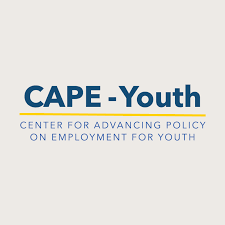By Abeer Sikder, JD and Mary Greenfield
When states implement strategies to promote diversity, equity, inclusion, and accessibility (DEIA)—particularly for women with disabilities who experience additional barriers to employment—they encourage more people to leverage their unique backgrounds to succeed.
This Women’s History Month, we sat down with two exceptional women who champion DEIA every day: Taryn Williams, Assistant Secretary of Labor in the Office of Disability Employment Policy, and Bruny Kenou, a mental health activist and student at George Washington University Medical School. Both women highlighted self-advocacy and mentorship as two powerful tentpoles of support for women in the workplace and offered advice to policymakers for creating accessible futures for everyone.
How Self-Advocacy Grows to Inclusion
Both Williams and Kenou learned to self-advocate as young people, in the context of their own health care. For Williams, it was her mother who encouraged her to ask questions, engage with professionals, and participate in decision-making during her medical appointments. Williams’s mother gave her the confidence to take up space and have her voice be clearly heard.
This early education in self-advocacy translated to a career in advocating for others who often go unrecognized. “I want women with disabilities to know they belong wherever they show up,” Williams says. “You deserve an opportunity to explore your aspirations, to build your skills, to try and be successful in jobs and careers you choose. Whether it be advocating for your accommodations or advocating for … equitable pay, find ways to become your own champion.”
Now, as assistant secretary of labor, Williams’s role is to enable and encourage employers across the United States to foster inclusion, instill equity, and support people with disabilities, including women, to achieve success. “Diversity and inclusion are not something we should have to fight for, but rather something that [should be] a natural and accepted part of our world,” Williams says. “But we’re not there yet.”
As a person who needed mental health care but was reluctant to seek help because of the stigma, Kenou experienced firsthand the lack of support for people facing barriers to care. While she was still an undergraduate in college, Kenou helped found DukeLine, a peer-to-peer mental health support program. She went on to work for the National Institute of Mental Health (NIMH); afterward, she entered medical school to become a physician.
Throughout her career, Kenou found herself fearing the repercussions of seeking mental health care as a job seeker. It was this stigma that motivated her to become a doctor and to cofound Lay Mental Health Advocates (LMHA). “I knew how important this story was to why I wanted to become a physician,” says Kenou, whose organization, LMHA, empowers people in their mental health journey by helping them follow up on appointments and talk to their health care providers about issues like side effects or changes in treatment. “I knew what an asset I would be going in with all these tools that I was able to amass through my healing journey.”
Mentorship and Sponsorship as Best Practice
Mentorship and sponsorship—women helping women—can empower younger workers with disabilities to overcome negative stereotypes about their abilities while elevating DEIA in workplaces.
Kenou notes that mentorship can work both ways, with older generations helping youth and vice versa. In medical school, Kenou benefits from the guidance of an older mentor who has helped her navigate school and even confront stigma around mental health. At the same time, she says, there’s a lot older generations can learn from youth about seeking help, sharing struggles, and embracing inclusion. “We’re so much more open to talking about our struggles and we’re so much more open to being like, ‘I talked to my therapist the other day,’” Kenou says.
While acknowledging that mentors provide essential guidance, especially for underrepresented women, Williams also sees sponsorship as a best practice. “Mentors help reflect back on different experiences,” Williams says, “but sponsors make a difference in addressing those harder barriers keeping us from our employment goals. Sponsorship is really about an individual, often in a senior role, who actively promotes your growth.”
Williams emphasized that mentors encourage women starting out in their careers to think about how to earn raises and promotions, but sponsors have the power to make these things happen and to advance careers.
Although significant job challenges for women with disabilities remain, Kenou says she is inspired by the increasing numbers of women in higher education and in leadership roles. She is especially proud that more and more Black women are earning degrees, and she encourages underrepresented women to find mentors and sponsors who understand their journey. “Lean on your advisors and lean on your mentors … be engaged and have people understand your vision,” Kenou says.
Advice for Policymakers
Williams and Kenou urge policymakers to keep in mind three key considerations that lend tremendous support to women with disabilities:
- The Family and Medical Leave Act (FMLA). Being able to take extended time away from work is crucial for recuperating from illness or caring for a loved one, and the FMLA affords this security to eligible employees. “Women with disabilities … oftentimes need to take that time, but they can’t without sacrificing their job,” says Williams. Additionally, Kenou frequently amplifies this message in her work to expand FMLA protections.
- Workforce DEIA funding for people with disabilities. Kenou encourages policymakers to increase funding to support DEIA efforts in the workplace. “I would really like to create a pipeline that increases diversity, especially in medicine and making it so that there is less discrimination,” Kenou says, noting that when young people receive care from providers who look like them or whom they are comfortable with, it helps reduce stigma. When leaders help reduce stigma toward disability, young women will have more confidence to request support.
- Inclusion of people with disabilities in leadership. Kenou and Williams want to see people with disabilities—especially women and youth of color who understand intersectionality—included in leadership. “[It ensures] that people with disabilities are represented in policymaking and, conversely, [that] the community knows and is a part of policy development,” Williams says. “Society sends us a message that our needs are less important or an afterthought and that we should just be grateful we’re there in the first place. … [We are] making the case to the broader world—including systems comprising people who make polices that affect our outcomes—[that] the world should be inclusive of us.”

